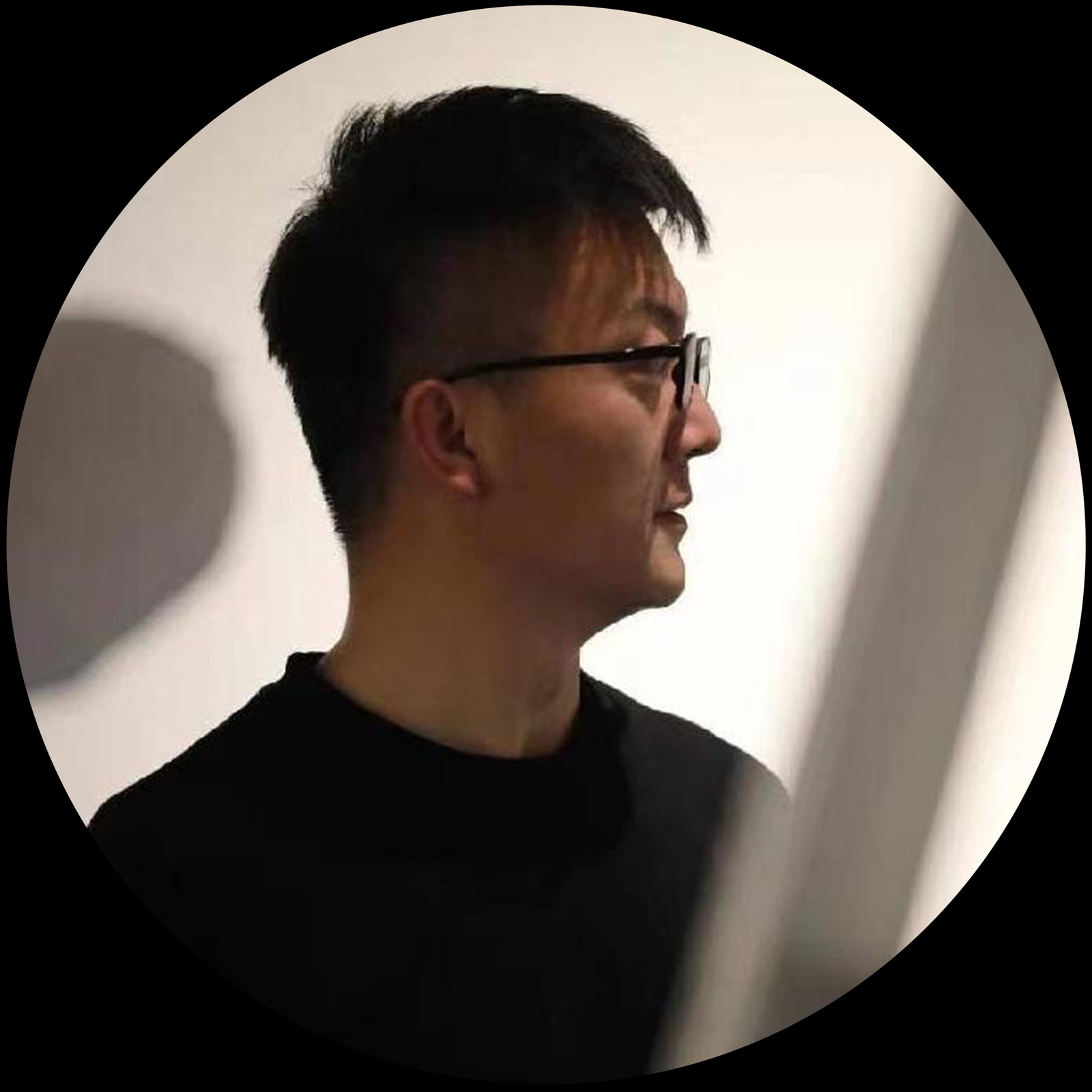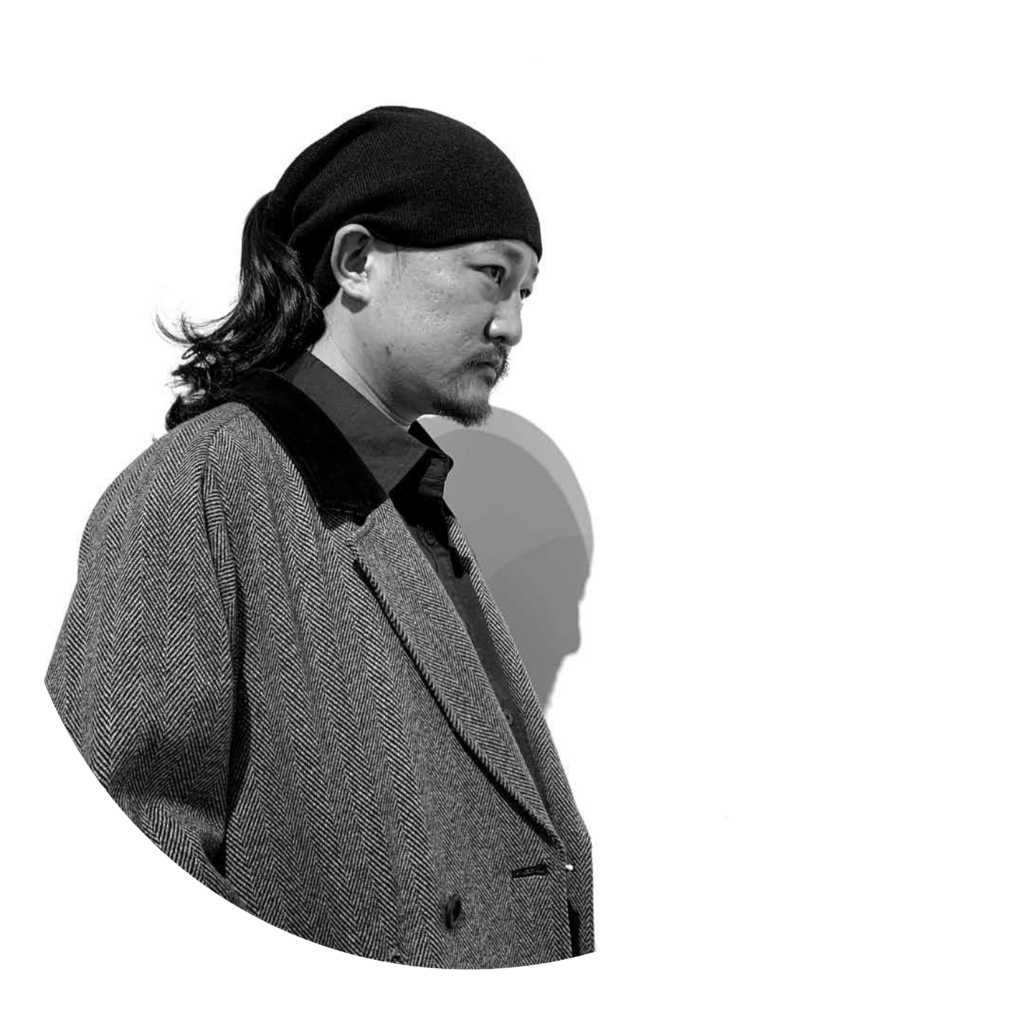
崔付利 Cui Fuli
批评家,策展人,成都吉利学院教师 Critic, Curator, teacher at Chengdu Geely College
文/崔付利 2022.04
肉身,在黑暗中炼金—王彦鑫的艺术观察
王彦鑫在大多数人眼中是一个倔强的、骨子里充满狼性的人。这与他粗旷的外表和西北的成长经历有一定关系,更和他的行为作品中所体现出的强烈个人意志有关。不过随着和王彦鑫的接触不断加深,你会发现他是一个内心细腻、温暖的人,以及他作品中个人英雄主义的张力背后蕴藏的悲情和苍怆。尤其是王彦鑫近两年在澳门和云南的驻留期间,他作品中的这种气质愈加明显。作为行为艺术领域活跃的新锐艺术家之一,王彦鑫一直保持着充沛的创作状态。这次展览从肉身、黑暗和炼金三个维度来切入王彦鑫的行为语言、方法探索和实践。
肉身
身体对于王彦鑫而言不只是媒介层面的意义,更是他行为艺术中的表现形式、场所、路径或战场。王彦鑫在不同的空间和场域中构建着身体与历史、文化、记忆、政治等意识形态的对话关系,或者说他用身体叙事弥补着历史在当下的缺席状态。从这个角度,王彦鑫行为中的身体更符合德勒兹对身体的界定——任何两种不平衡的力,只要形成关系就构成一个身体。“两种不平衡力的关系”一直贯穿于王彦鑫的作品中,比如他的早期作品《英雄》《魔法师》《功夫大师》中,王彦鑫的行为张力就建构在与观众、与他者意志对抗的博弈的关系之上。
如果说王彦鑫早期的行为通过与他者的不平衡力的对抗来获得身体的客观性,那从2016年开始,王彦鑫的行为开始从外部逐步转向对身体内部自主性的挖掘。肉身不再是一个非层次化的表面,而是行动与身体意识、身体叙事的统一。在作品《百年》中,王彦鑫在一段废弃的铁路隧道里燃放一百响烟花,他兀立在绚烂的烟花面前,任凭燃烧的火药在狭窄的空间里四处乱窜,不断擦伤烧伤他的肉身。滇越铁路作为云南省第一段铁路,承载着一段殖民与被殖民以及不同民族经济、文化交流的历史见证和缩影。在黑暗幽长的隧道中,肉身在礼花的绽放中忽隐忽现,将身体的渺小与历史的沉重共置于同一时空,如同一场既悲壮又浪漫的祭礼。
王彦鑫在跟我讨论展览主题过程中对肉身的概念过于陈旧表示担忧,肉身经验的确是一个比较老套的话语。不过在今天重提肉身有着新的现实必然性。因为在当下互联网和新媒体的碎片化时代,在虚拟景观和流量经济盛行的主流趋势下,重塑肉身经验成为一种新的必要,尤其是让身体再次成为问题意识和方法意识的媒介、场所和战场,以及个体与历史、政治和他者的不确定关系的纽带。
黑暗
“人生除了死亡,一切都是擦伤”,这是王彦鑫在日本寺庙看到的一句揭语,同样也是他常挂在嘴边的一句话。这和前面提到的肉身经验有内在的关联性,不过这也让我联想到俄国作家纳博科夫对人生的归纳,他说“人生是一道短暂的光缝,介于两片永恒的黑暗之间”。无论是擦伤还是黑暗,都注定了人生中不可或缺的悲情气息,同样也是王彦鑫近期作品中的独特气质。
王彦鑫似乎在黑夜中比较敏感和思辨,他在黑暗的环境中创作了大量的行为作品。而黑夜在不同的作品中也承担着不同的角色和意义,有的只是单纯的时间概念,有的则是他作品中重要的媒介和材质。比如早期行为作品《黑夜想起黎明》,他站在黄昏的冰河上用嘴巴将红色色素喷满整块圆形玻璃,鲜艳的红色与黑夜形成明显的反差,徒劳而又悲壮的行为在理想与现实的碰撞中不断回响。还有他在日本福岛的作品《当我们再次相逢》,他在黑夜中如精灵般舞蹈,在生命与死亡、真实与幻象之间构建了某种瞬间的永恒。
在作品《黑暗的间隙》中,他深夜矗立在乡间路边的大树上等待黎明,借着偶尔路过的汽车灯光出场,他像一尊鬼魅的雕像,时隐时现,大多数时候,他只是在黑寂中与虫鸣蛙声融为一片。设想他假如在傍晚等待黑夜,这件作品是否还有同样的张力?我想在这件作品中他更多的是想隐藏身体,或者最起码不是强调和突出身体的意义。可能白天过于清晰明朗,夜晚才是真正的辽阔无垠,似乎只有在黑暗的间隙才能反观个体的伟岸。所以,我们不能认为被偶然照亮的身体才是高级的,毕竟黑暗中的长久等待才是一种真实的常态。
炼金
炼金总让人与神秘、玄幻的气息产生联想,尤其当与肉身和黑暗结合起来,就更增添了一种神秘感。不过这里提到的炼金既不是中世纪的悲惨和愚钝,也不是中国传统中对长生之身的迷恋,更和王彦鑫行为作品中的气质毫无瓜葛。这里的炼金更多的是指一个提纯的过程,一个祛除其他杂质从而获得最纯洁的真金的过程。如果从精神来上来说,就是人的自我发现之术;如果从行为艺术的语言来说,也就是行为语言不断凝练的过程。
我们不能以进化论的眼光来区分王彦鑫早期作品和现在作品的低与高的问题,不过我曾就一个问题跟他展开过多次讨论,也就是文章伊始所提到的大家对他和他作品的一种感受。在过去的作品中他是通过一种身体意志和向外扩张的方式在彰显着作品的生猛和张力。在澳门驻留期间,他在网上曾跟我分享作品并讨论了三个小时之久,我发现他的作品气质与以往完全不同。他似乎真正打开了自我,甚至能够真正的放下自我,转向一种更暖温、更内敛、更深层次的表达方式,我反而觉得作品较之以往更有张力。
现今,王彦鑫在云南驻留的作品更凝练、深化了这种创作的方法和气质,而且显现出一种个人英雄主义背后的悲情气息。他不再像过去那样强调某种意义,反而在消解自己与他人所要赋予的内容和意义。这也是他最近跟我频繁讨论的问题之一,在不同的驻留项目差异性的自然、地理和文化的因素之外,该如何真正建构、推动个体行为语言的方法论体系。这次展览不是王彦鑫十年行为艺术创作的回顾和梳理,而是从过去的作品中提炼出一个可以切入他的角度和路径,最重要的是期待他的行为以此开始新的起点和突破。
2022.4.4 /凌晨
The Body, Alchemizing in the Darkness — An Art Observation of Wang Yanxin
Wang Yanxin is seen by many as a stubborn, wolf-like character, a personality that can be attributed to both his rugged appearance and his upbringing in the northwest of China, as well as the strong personal will that pervades his performance art. However, as one’s contact with Wang Yanxin deepens, it becomes apparent that he is also a sensitive, warm-hearted individual, and that behind the tension of personal heroism in his work lies a profound sadness and melancholy. In particular, during his recent residencies in Macau and Yunnan, this quality has become even more pronounced. As one of the emerging active artists in the field of performance art, Wang Yanxin has maintained a vigorous creative output. This exhibition delves into Wang Yanxin’s artistic language, method exploration, and practice through the three dimensions of the body, darkness, and alchemy.
The Body
For Wang Yanxin, the body is not merely a medium; it is the form of expression, the space, the path, or even the battlefield of his performance art. In various spaces and environments, Wang Yanxin constructs dialogues between the body and ideologies such as history, culture, memory, and politics. In other words, he uses the body as a narrative tool to bridge the absence of history in the present. From this perspective, Wang Yanxin’s use of the body aligns with Gilles Deleuze’s definition of the body—any two imbalanced forces, once they form a relationship, constitute a body. The “relationship of two imbalanced forces” runs through Wang Yanxin’s works. For example, in his early works Hero, Magician, and Kung Fu Master, the tension in his performances was built around the struggle against the will of others, in a direct confrontation with the audience and their expectations.
If in his early works, Wang Yanxin used the external imbalance of forces to achieve objectivity in the body, starting from 2016, his performances began shifting inward to explore the autonomy of the body itself. The body is no longer a flat surface devoid of layers but a unity of action, bodily consciousness, and narrative. In A Hundred Years, Wang Yanxin set off a hundred fireworks inside an abandoned railway tunnel. He stood motionless before the bright fireworks, allowing the burning gunpowder to scatter and injure his body in the narrow space. The Yunnan-Vietnam Railway, as the first railway in Yunnan province, bears the history of colonialism, the interplay between colonizers and the colonized, and the economic and cultural exchanges between different ethnic groups. In the dark, long tunnel, his body appeared intermittently amid the blooming fireworks, placing the smallness of the body alongside the weight of history in the same space-time. It was as if a tragic and romantic ritual unfolded.
Wang Yanxin expressed concern during a discussion of the exhibition theme that the concept of the body is too old-fashioned, and indeed, the body as an experience is a somewhat overused discourse. However, in today’s fragmented age of the internet and new media, where virtual landscapes and the flow of information dominate, re-shaping bodily experience has become a new necessity. The body must once again be re-examined as a medium, a space, and a battlefield—addressing the uncertain relationships between the individual, history, politics, and others.
Darkness
“Life, apart from death, is all just scratches.” This is a phrase Wang Yanxin came across in a Japanese temple, one that he often repeats. It connects to the earlier concept of the body experience, but it also reminds me of Russian writer Nabokov’s view of life, which he described as “a brief slit of light, between two eternities of darkness.” Whether it’s scratches or darkness, both signal the inescapable melancholic air of life, a quality that has increasingly become a distinct feature in Wang Yanxin’s recent works.
Wang Yanxin seems particularly sensitive and reflective in the darkness. He has created numerous performance works in dark environments. Darkness plays different roles in these works, sometimes merely as a concept of time, and sometimes as a key medium or material. For example, in his early performance The Night Remembers the Dawn, he stood on a frozen river at dusk, spraying red pigment onto a round glass pane with his mouth. The vivid red contrasted sharply with the darkness, and the futile yet tragic action reverberated between idealism and reality. Another piece, When We Meet Again in Fukushima, Japan, featured him dancing in the darkness like an elusive spirit, constructing a fleeting eternity between life and death, reality and illusion.
In The Gap in Darkness, Wang Yanxin stood alone by the side of a country road at midnight, waiting for dawn. With the occasional headlights of passing cars illuminating him, he resembled a ghostly statue—appearing and disappearing—most of the time blending into the darkness, merging with the sounds of insects and frogs. If he had waited for nightfall in the evening, would the piece have held the same tension? I believe the artist’s intention in this piece was not to emphasize the body but to hide it, or at least not to highlight its meaning. The clarity of daylight may have been too obvious, but it is only in the gaps of darkness that one can reflect on the body’s stature. We cannot assume that the body illuminated by chance is the “higher” one. After all, it is the long wait in darkness that constitutes the true norm.
Alchemy
Alchemy often evokes a sense of mystery and the fantastical, and when combined with the body and darkness, it enhances the mystique. However, the alchemy referred to here is not the medieval tragic or foolish pursuit of the philosopher’s stone, nor is it connected to the Chinese obsession with immortality. Rather, it refers to the process of purification—removing impurities to obtain the purest gold. In a spiritual sense, this could be likened to the process of self-discovery; in the language of performance art, it refers to the refining process of performance language.
We cannot apply an evolutionary lens to distinguish between the lower and higher value of Wang Yanxin’s early works versus his current pieces. However, I once had several discussions with him on this topic, as I mentioned at the beginning of this article. In the past, his works showcased a more aggressive expansion of bodily will, exhibiting vitality and tension. During his residency in Macau, he shared his work with me online, and we discussed it for three hours. I noticed that his works now bear a completely different temperament. He seems to have truly opened himself up, and perhaps even let go of himself, turning toward a warmer, more inward, and deeper form of expression. In fact, I felt that these newer works held even greater tension than his earlier ones.
Currently, Wang Yanxin’s work during his residency in Yunnan has refined and deepened this method and temperament, while also revealing the tragic air behind his personal heroism. He no longer emphasizes a particular meaning but rather dissolves the content and meaning that others might assign to his body and actions. This is also one of the questions he and I have frequently discussed: how, beyond the natural, geographical, and cultural differences in various residency projects, can one truly construct and push forward a methodological system for individual performance language? This exhibition is not a retrospective or a summary of Wang Yanxin’s ten years of performance art, but rather an exploration of a point from which to approach his works. More importantly, it is an anticipation of his performance entering a new starting point and breakthrough.
April 4, 2022 / Cui Fuli,Midnight
// 最近新作Recent Post
// 分类Categories

1988年生于甘肃兰州,2013年毕业于四川美术学院新媒体系,现工作生活于成都,任教四川文化艺术学院,副教授。
Wang Yanxin, born in 1988 in Lanzhou, Gansu, China. graduated from Sichuan Fine Arts Institute in 2013. Since 2012, he has been engaged in multimedia artistic creation based on performance art. He currently lives and works in Chengdu and is a professor at Sichuan Conservatory of Culture and Arts.
- Chengdu, Sichuan, China
- +86 15215015022
订阅Newsletter
Copyright by wangyanxin.com. 版权所有.

-1.png)
